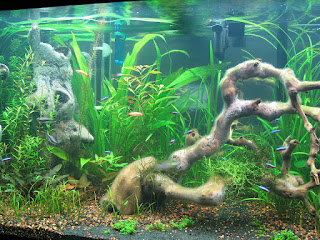Hello all,
Just saw some wonderful images I wanted to share - the very talented mr. Isley combined toy figures with reef fish and the result is stunning:
The collection can be seen at DailyMail, were they write:
"Jules Verne might have written the classic 20,000 Leagues Under The Sea, but now one British photographer has created his own hilarious version of what a life beneath the waves might entail.
Underwater photographer, Jason Isley, 42, originally from Essex, decided to have a bit of fun for a change with some of the smaller colourful reef fish in Borneo and Indonesia.
So he got a selection of toy human figures from soldiers to sunbathers and photographed them in a set of hilarious scenes as they interacted with the fish and other sea creatures."
All the best,
Kasper
Just saw some wonderful images I wanted to share - the very talented mr. Isley combined toy figures with reef fish and the result is stunning:
 |
| Hilarious (with great skill as well). |
The collection can be seen at DailyMail, were they write:
"Jules Verne might have written the classic 20,000 Leagues Under The Sea, but now one British photographer has created his own hilarious version of what a life beneath the waves might entail.
Underwater photographer, Jason Isley, 42, originally from Essex, decided to have a bit of fun for a change with some of the smaller colourful reef fish in Borneo and Indonesia.
So he got a selection of toy human figures from soldiers to sunbathers and photographed them in a set of hilarious scenes as they interacted with the fish and other sea creatures."
All the best,
Kasper














